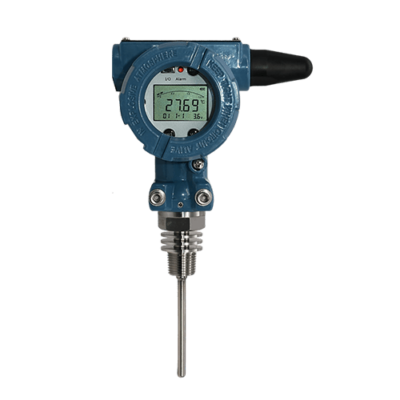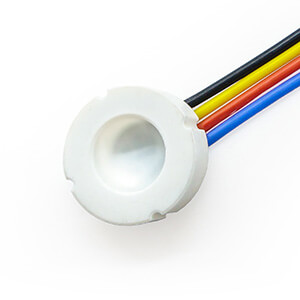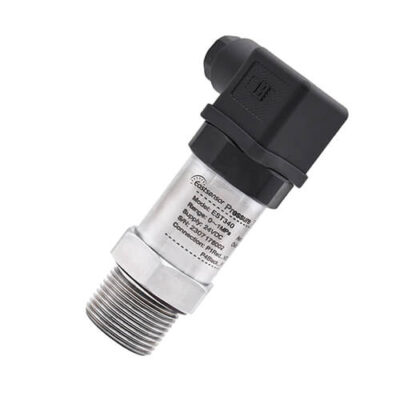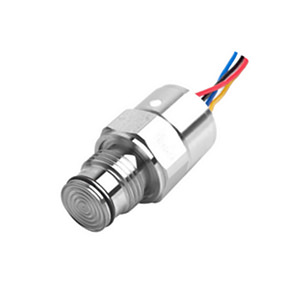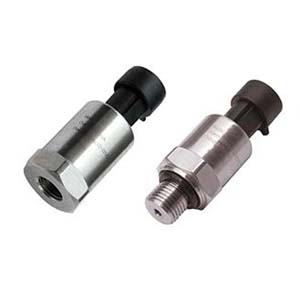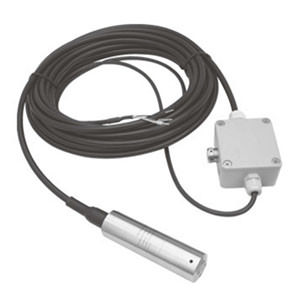Material selection is crucial for pressure sensor production because the chosen materials can significantly impact the sensor’s performance, durability, and resistance to various environmental factors.
Different materials have varying properties such as corrosion resistance, strength, and stiffness, which makes them suitable for specific operating conditions.
The selection of materials should consider the type of sensing element used in the pressure sensor. For example, some pressure sensors use a strain gauge to measure pressure. In this case, the material used to make the strain gauge must be durable and resist mechanical fatigue, so it doesn’t deform over time from repeated loads. Other pressure sensors may use a piezoelectric or capacitive element to sense pressure, where material properties such as dielectric constant, resistivity, and thermal expansion coefficients become critical.
Today, I’d like to provide insights into choosing the proper and qualified materials for pressure sensor sensing elements, PCB, Filled Fluid, O-Rings, Cable and Wires, Housing and Wetted parts as below.
Material of Sensing element
There are several types of materials commonly used for sensing elements, including:
Silicon:
Silicon is the most common material used for pressure sensor sensing elements. It is used in piezoresistive and capacitive pressure sensors. Silicon has excellent mechanical properties, high sensitivity, and good long-term stability. However, silicon is sensitive to temperature changes, and its performance can degrade under harsh environmental conditions.
Stainless steel:
Stainless steel is a popular material for sensing elements in harsh environments due to its excellent corrosion resistance, durability, and strength. It is commonly used in strain gauge pressure sensors, where the sensing element is bonded to a metal diaphragm.
Ceramic:
Ceramic sensing elements are used in capacitive and thick-film pressure sensors. They offer good chemical resistance, and temperature stability, and are suitable for harsh environments. However, ceramics can be brittle and may not be ideal for high shock or vibration applications.
Metal foil strain gauges:
Metal foil strain gauges are often used in bonded strain gauge pressure sensors. They provide good stability and can withstand high pressures, but their sensitivity is lower than silicon-based sensors.
| Material | Pros | Cons |
|---|---|---|
| Silicon | - High sensitivity | - Sensitive to temperature changes |
| - Good long-term stability | - Not ideal for harsh environments | |
| - Suitable for small pressure ranges | ||
| Stainless Steel | - Excellent corrosion resistance | - Lower sensitivity compared to silicon |
| - High durability and strength | - Heavier and bulkier | |
| - Suitable for high pressure ranges | ||
| Ceramic | - Good chemical resistance | - Brittle and less suitable for high shock |
| - Temperature stability | or vibration applications | |
| - Suitable for harsh environments | - Lower sensitivity compared to silicon | |
| Metal Foil Strain Gauges | - Good stability | - Lower sensitivity compared to silicon |
| - Can withstand high pressures | - Less suitable for small pressure ranges |
When selecting the material for a pressure sensor sensing element, you need to consider factors such as the pressure range, sensitivity requirements, operating temperature, and environmental conditions (e.g., corrosion, shock, vibration). Each material has its advantages and drawbacks, so the choice will depend on the specific requirements of your application.
Material of pcb
It’s essential to pay attention to the choice of material for the PCB (printed circuit board) when designing a pressure sensor, as it can impact the performance, reliability, and overall quality of the sensor. Here’s a comparison of some common PCB materials:
| Material | Pros | Cons |
|---|---|---|
| FR-4 (Standard) | - Widely available | - Limited thermal performance |
| - Low cost | - Not ideal for high-frequency applications | |
| - Good mechanical and electrical properties | ||
| Polyimide | - Excellent thermal performance | - Higher cost |
| - Suitable for high-temperature environments | - More difficult to process | |
| - Flexible, ideal for flex PCB applications | ||
| PTFE (Teflon) | - Excellent for high-frequency applications (RF, microwaves) | - High cost |
| - Low dielectric constant and loss tangent | - More difficult to process | |
| - Good thermal performance | ||
| Rogers (Laminates) | - Good thermal performance | - Higher cost |
| - Excellent for high-frequency applications | - Limited availability | |
| - Low dielectric constant and loss tangent |
When choosing a PCB material, consider factors such as your pressure sensor’s operating temperature, frequency, and mechanical stress requirements.
For example, if your sensor is used in high-temperature environments or requires high-frequency performance, you might choose a material like polyimide or PTFE. However, if cost is a significant concern and the sensor operates within standard temperature ranges, FR-4 may be a suitable option. Always weigh the pros and cons of each material based on the specific requirements of your pressure sensor application.
| Material | Thermal Conductivity (W/m·K) | Dielectric Constant | Loss Tangent | Tg (Glass Transition Temperature) (°C) | Cost (Relative) |
|---|---|---|---|---|---|
| FR-4 (Standard) | 0.8 - 1.5 | 4.3 - 4.8 | 0.02 - 0.025 | 130 - 170 | Low |
| Polyimide | 0.5 - 0.6 | 3.4 - 4.4 | 0.002 - 0.02 | 250 - 260 | Medium |
| PTFE (Teflon) | 0.2 - 0.3 | 2.1 - 3.0 | 0.0009 - 0.0015 | NA | High |
| Rogers | 0.8 - 1.5 | 3.0 - 10.2 | 0.0013 - 0.0037 | 280 - 390 | High |
Remember that the specific values can vary depending on the manufacturer and grade of the material. When selecting a PCB material for your pressure sensor, consider factors like thermal conductivity, dielectric constant, loss tangent, and the glass transition temperature (Tg) in addition to the cost. Choose a material that best suits the requirements of your specific application.
Material of filled fluid
Fluid-filled pressure sensors are often used when dealing with high levels of vibration, shock, or when temperature compensation is necessary. They can also provide better long-term stability and help reduce the effects of mechanical stress. Here is a table comparing common fluid materials used in fluid-filled pressure sensors:
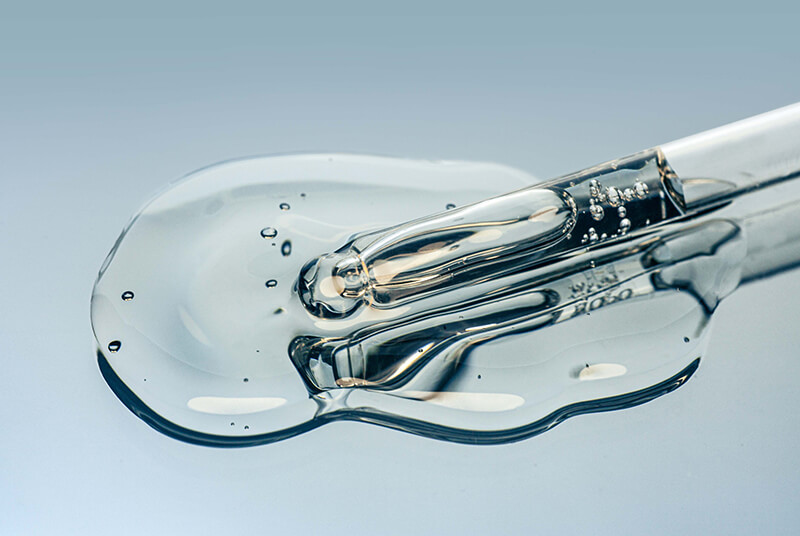
| Fluid Material | Viscosity (cP) | Temperature Range (°C) | Compatibility with Materials | Pros | Cons |
|---|---|---|---|---|---|
| Silicone Oil | 10 - 100 | -50 to 200 | Most metals, elastomers, and plastics | Wide temperature range, good chemical resistance, low toxicity | Can become contaminated or leak |
| Mineral Oil | 10 - 100 | -10 to 150 | Most metals, elastomers, and plastics | Low cost, good lubrication, wide availability | Less chemically stable than silicone oil, narrower temperature range |
| Inert Gases (e.g., Nitrogen) | Varies | -200 to 200 | Most metals, elastomers, and plastics | Non-reactive, can handle extreme temperatures, no risk of leaks | Requires a sealed system, may cause measurement inaccuracies if pressure changes |
| Fluorocarbon-based Oils | 100 - 1000 | -40 to 280 | Most metals, some elastomers and plastics | Excellent chemical resistance, wide temperature range | Higher cost, limited material compatibility |
| Glycol-based fluids | 30 - 200 | -40 to 120 | Most metals, elastomers, and plastics | Good lubrication, low cost, biodegradable | Limited temperature range, can absorb moisture |
Material of O-ring
O-rings are used in pressure sensors to create a tight seal between components and prevent the ingress of contaminants, moisture, or other substances that could compromise the sensor’s performance. O-rings are typically required in applications where the sensor is exposed to harsh environments, high pressures, or corrosive media.
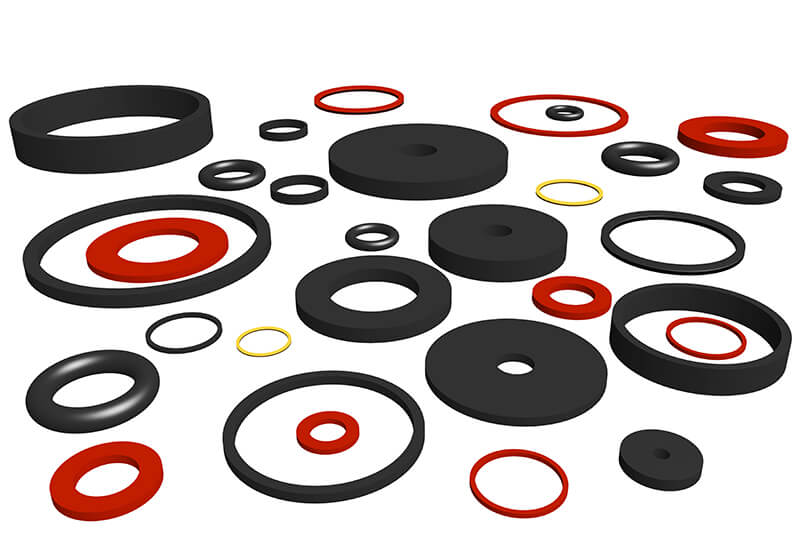
Here’s a table comparing various O-ring materials, their pros, and cons:
| Type | Material | Temperature Range | Highlight Features | Suitable Industries | Limitations |
|---|---|---|---|---|---|
| Nitrile (NBR) | Acrylonitrile Butadiene | -40°C to +120°C | Good chemical and oil resistance | Automotive, industrial, hydraulics | Poor resistance to ozone and UV light |
| Silicone (VMQ) | Silicone elastomer | -60°C to +225°C | Excellent temperature resistance | Electronics, aerospace, automotive | Poor tensile strength, tear resistance |
| Fluorocarbon (FKM/Viton) | Fluorinated hydrocarbon | -20°C to +200°C | Excellent chemical and heat resistance | Automotive, aerospace, chemical | Not suitable for low temperatures |
| Ethylene Propylene (EPDM) | Ethylene Propylene diene monomer | -55°C to +150°C | Excellent ozone, UV, and weather resistance | Automotive, water systems, HVAC | Poor resistance to oils and fuels |
| Neoprene (CR) | Polychloroprene | -40°C to +120°C | Good resistance to ozone, UV, and weather | Refrigeration, automotive, marine | Moderate chemical and temperature resistance |
| Polyurethane (AU/EU) | Urethane elastomer | -30°C to +100°C | Excellent abrasion and tear resistance | Hydraulic systems, automotive | Poor resistance to high temperatures |
| Perfluoroelastomer (FFKM) | Fully fluorinated elastomer | -20°C to +330°C | Exceptional chemical and heat resistance | Semiconductor, chemical, aerospace | High cost, limited low-temperature performance |
| Hydrogenated Nitrile (HNBR) | Hydrogenated Acrylonitrile Butadiene | -40°C to +150°C | Improved ozone, UV, and chemical resistance compared to NBR | Automotive, oil and gas, industrial | Limited resistance to polar solvents, strong acids |
Material of Cable and Wires
First, let’s clarify the difference between wires and cables in the context of pressure sensors:
- Wires: A wire is a single, flexible, cylindrical conductor that transmits electricity. It is typically made of a metal core (usually copper or aluminum) and an insulating material to cover and protect the core.
- Cables: A cable consists of multiple wires or conductors bundled together, usually with an insulating or protective outer layer. Cables can transmit electrical signals or power, and their construction allows for more complex connections and greater durability in various environments.
Click for more details about the pressure sensor cable
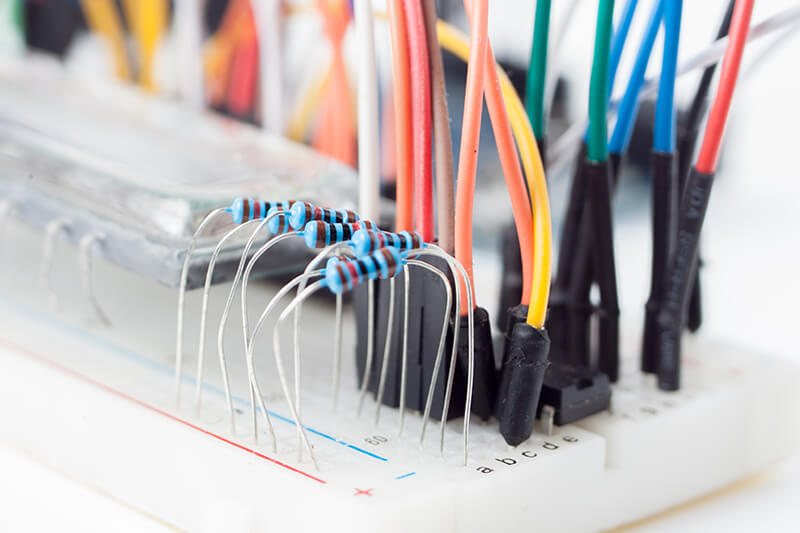
Now, let’s look at the materials used for wires and cables:
| Type | Material | Pros | Cons | Limitations | Common Applications | Model Types/Examples |
|---|---|---|---|---|---|---|
| Wire | Copper | High electrical conductivity (5.96×10^7 S/m), good flexibility, solderable | Heavier, less resistant to corrosion than aluminum | Susceptible to corrosion in certain environments | Power transmission, data transmission, electronics | AWG, THHN, THWN |
| Wire | Aluminum | Lightweight, good electrical conductivity (3.77×10^7 S/m), cost-effective | Less flexible, less solderable, prone to oxidation | Oxidation, less flexible, difficult to solder | Power transmission, overhead lines, automotive | AA, AAAC, ACSR |
| Insulation (Wire/Cable) | PVC (Polyvinyl Chloride) | Economical, flexible, flame retardant, good insulating properties | Not ideal for high temperatures or extreme environments | Limited temperature range (-40°C to 105°C), not suitable for harsh environments | General-purpose wiring, automotive, building wiring | UL 1015, UL 1007 |
| Insulation (Wire/Cable) | PTFE (Teflon) | Excellent chemical resistance, wide temperature range (-196°C to 260°C), flame retardant | Higher cost, stiffer than PVC | Higher cost, stiffer than other insulation materials | Harsh environments, aerospace, chemical processing | MIL-W-16878, Type E |
| Insulation (Wire/Cable) | Silicone | Good temperature range (-60°C to 180°C), flame retardant, flexible | Lower mechanical strength, more expensive than PVC | Lower mechanical strength, higher cost | High-temperature applications, medical equipment | UL 3239, UL 3302 |
| Insulation (Wire/Cable) | PE (Polyethylene) | Lightweight, good dielectric properties, resistant to moisture | Lower temperature range (-65°C to 80°C), less flexible than PVC | Limited temperature range, less flexible than PVC | Telecommunications, low voltage applications | PE-89, PE-39 |
| Insulation (Wire/Cable) | FEP (Fluorinated Ethylene Propylene) | Excellent chemical resistance, wide temperature range (-200°C to 205°C), flame retardant | Higher cost, stiffer than PVC | Higher cost, stiffer than other insulation materials | Harsh environments, aerospace, chemical processing | UL 1330, UL 1659 |
Material of Housing & Wires when Package
For good checking, please find below table comparing different materials used for wire, housing, and pressure sensor packaging
| Component | Material | Pros | Cons | Limitations | Suitable Industries | Examples | ||
|---|---|---|---|---|---|---|---|---|
| Wire | Copper | High electrical conductivity (5.96×10^7 S/m), good flexibility, solderable | Heavier, less resistant to corrosion than aluminum | Susceptible to corrosion in certain environments | Power transmission, data transmission, electronics | AWG, THHN, THWN | ||
| Wire | Aluminum | Lightweight, good electrical conductivity (3.77×10^7 S/m), cost-effective | Less flexible, less solderable, prone to oxidation | Oxidation, less flexible, difficult to solder | Power transmission, overhead lines, automotive | AA, AAAC, ACSR | ||
| Housing | Stainless Steel | Corrosion-resistant, high strength, durable, good temperature resistance | Heavier, more expensive than plastic | Heavier, more expensive than other materials | Oil and gas, food and beverage, marine, chemical | SS 316, SS 304 | ||
| Housing | Aluminum | Lightweight, corrosion-resistant, cost-effective | Lower strength than stainless steel, prone to oxidation | Prone to oxidation, lower strength than stainless steel | Automotive, aerospace, electronics, general-purpose | 6061, 7075 | ||
| Housing | Plastic | Lightweight, cost-effective, good chemical resistance | Lower strength and temperature resistance than metals | Lower strength, limited temperature resistance | Consumer electronics, automotive, general-purpose | ABS, Polycarbonate | ||
| Pressure Sensor Packaging | Ceramic | Good chemical resistance, stable at high temperatures, electrical insulation | Brittle, more expensive than some metals | Brittle, more expensive than some metals | Oil and gas, automotive, aerospace, chemical | Alumina, Zirconia | ||
| Pressure Sensor Packaging | Stainless Steel | Corrosion-resistant, high strength, durable, good temperature resistance | Heavier, more expensive than plastic | Heavier, more expensive than other materials | Oil and gas, food and beverage, marine, chemical | SS 316, SS 304 | ||
| Pressure Sensor Packaging | Plastic | Lightweight, cost-effective, good chemical resistance | Lower strength and temperature resistance than metals | Lower strength, limited temperature resistance | Consumer electronics, automotive, general-purpose | ABS, Polycarbonate |
Material of Wetted Parts
Wetted parts are the components of a pressure sensor that come into direct contact with the process media (liquid, gas, or vapor). Choosing the right material for wetted parts is crucial for ensuring the sensor’s accuracy, reliability, and longevity.
Here are some common materials for wetted parts and factors to consider when selecting them:
Stainless Steel (e.g., SS 316, SS 316L, SS 304)
- Pros: Corrosion-resistant, durable, good strength, good temperature resistance
- Cons: Heavier and more expensive than some other materials
- Suitable for: Oil and gas, food and beverage, marine, chemical industries
Hastelloy (e.g., Hastelloy C276)
- Pros: Excellent corrosion resistance, especially to acidic and chloride environments, good strength, high temperature resistance
- Cons: More expensive than stainless steel
- Suitable for: Chemical, petrochemical, oil and gas, wastewater treatment industries
Monel (e.g., Monel 400)
- Pros: Good corrosion resistance, especially to reducing media, good strength, high temperature resistance
- Cons: More expensive than stainless steel, less resistant to oxidizing environments than Hastelloy
- Suitable for: Marine, chemical, petrochemical, oil and gas industries
Tantalum
- Pros: Outstanding corrosion resistance, high temperature resistance, biocompatible
- Cons: Expensive, limited availability
- Suitable for: Chemical, pharmaceutical, medical industries
Ceramic (e.g., Alumina, Zirconia)
- Pros: Good chemical resistance, stable at high temperatures, electrical insulation
- Cons: Brittle, more expensive than some metals
- Suitable for: Oil and gas, automotive, aerospace, chemical industries
PTFE (Polytetrafluoroethylene)
- Pros: Excellent chemical resistance, non-stick properties, good electrical insulation
- Cons: Limited temperature and pressure range, lower mechanical strength compared to metals
- Suitable for: Food and beverage, chemical, pharmaceutical industries
When choosing a material for wetted parts, consider the following factors:
- Chemical compatibility: Ensure the material is resistant to the process media.
- Temperature range: Choose a material that can withstand the expected temperature range of the application.
- Pressure range: Select a material with adequate strength to withstand the pressure range.
- Cost: Balance the material cost with the desired performance and reliability.
- Regulatory requirements: Comply with industry-specific regulations (e.g., FDA, NSF) if necessary.
| Material | Pros | Cons | Suitable Industries | Limitations |
|---|---|---|---|---|
| Stainless Steel (e.g., SS 316, SS 316L, SS 304) | Corrosion-resistant, durable, good strength, good temperature resistance | Heavier and more expensive than some other materials | Oil and gas, food and beverage, marine, chemical industries | Cost, weight |
| Hastelloy (e.g., Hastelloy C276) | Excellent corrosion resistance, especially to acidic and chloride environments, good strength, high temperature resistance | More expensive than stainless steel | Chemical, petrochemical, oil and gas, wastewater treatment industries | Cost |
| Monel (e.g., Monel 400) | Good corrosion resistance, especially to reducing media, good strength, high temperature resistance | More expensive than stainless steel, less resistant to oxidizing environments than Hastelloy | Marine, chemical, petrochemical, oil and gas industries | Cost, oxidation resistance |
| Tantalum | Outstanding corrosion resistance, high temperature resistance, biocompatible | Expensive, limited availability | Chemical, pharmaceutical, medical industries | Cost, availability |
| Ceramic (e.g., Alumina, Zirconia) | Good chemical resistance, stable at high temperatures, electrical insulation | Brittle, more expensive than some metals | Oil and gas, automotive, aerospace, chemical industries | Brittleness, cost |
| PTFE (Polytetrafluoroethylene) | Excellent chemical resistance, non-stick properties, good electrical insulation | Limited temperature and pressure range, lower mechanical strength compared to metals | Food and beverage, chemical, pharmaceutical industries | Temperature and pressure range, mechanical strength |
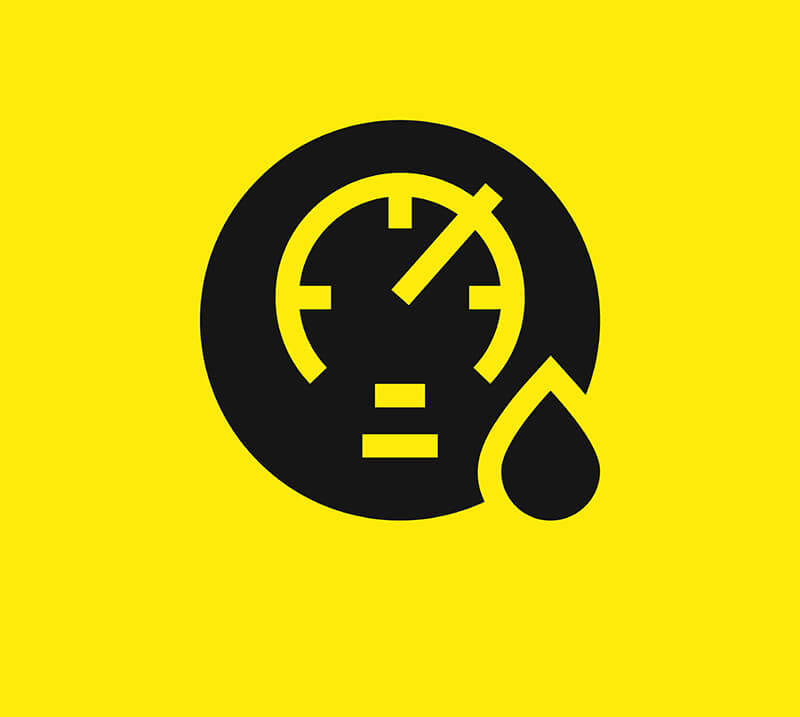
Summary
In conclusion, the selection of materials for pressure sensors is highly dependent on the specific application, industry, and environmental conditions. Understanding each material’s properties, advantages, and limitations is essential to ensure the pressure sensor performs optimally and maintains a long service life.
Different pressure sensor applications require materials with different properties. For instance, sensors used in environments with high humidity, saltwater corrosion, or exposure to harsh chemicals require materials that can withstand chemical attack and resist degradation.
Therefore, material selection for pressure sensor production is vital to ensure that the sensor can meet its intended use for an extended period, offer high measurement accuracy, good repeatability, and reliability. The wrong material selection can lead to sensor failure, lower accuracy, reduced lifespan, and even safety risks due to chemical corrosion, deformation of the measurement component, or even material fatigue.


